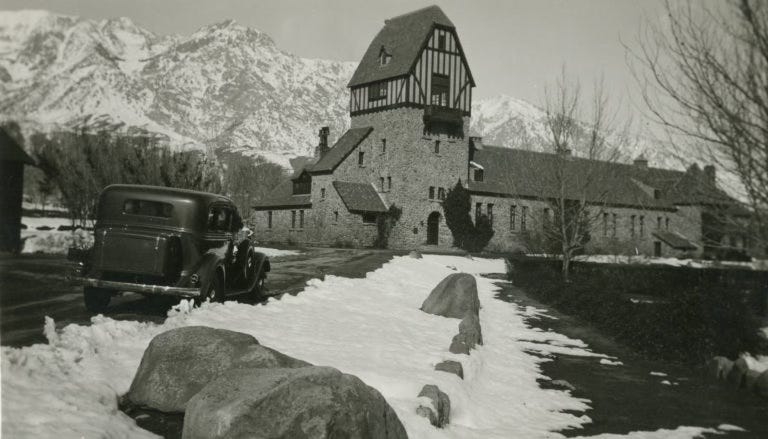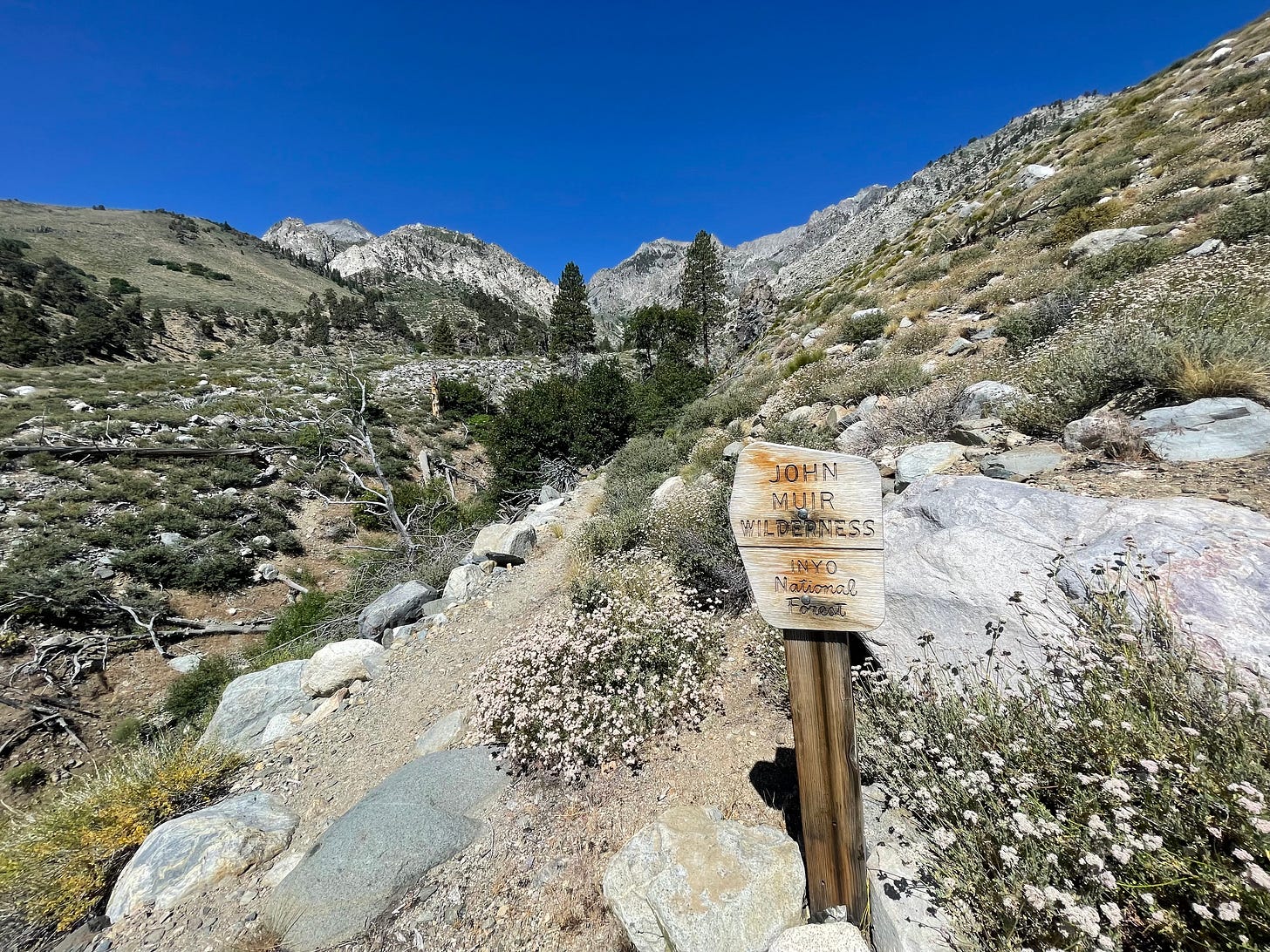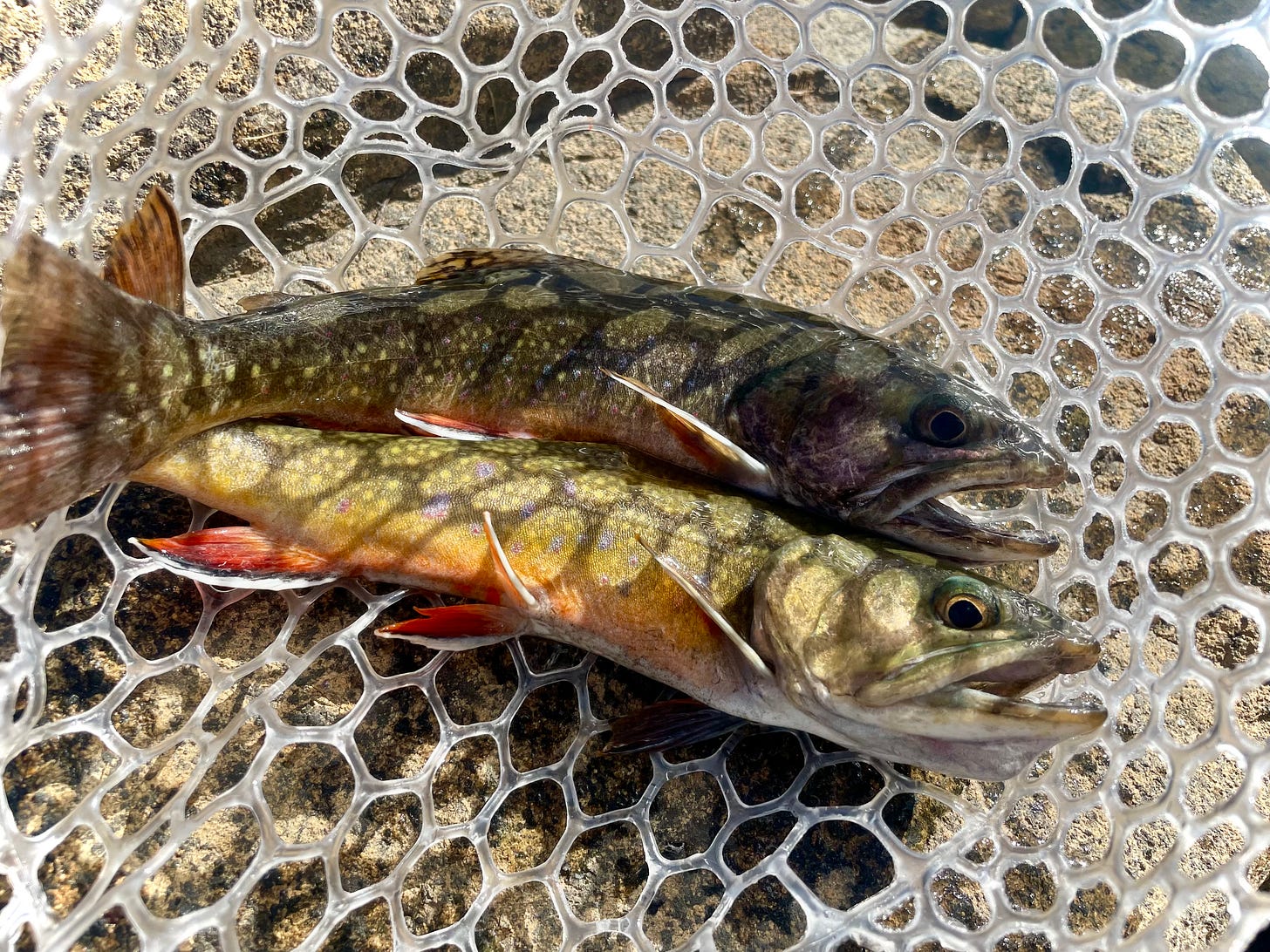The GPS on the dash told me to turn right—which seemed wrong, though I made the turn anyway. I was trying to find a trailhead, and this was taking me into a a compound dominated by a set of worn Tudor-style buildings that looked rather out of place here on the dusty flat of Payahuunadü (aka the Owens Valley), just below the steely gray caps of the mountains of the Eastern Sierra.
The navigation landed me at a locked gate, with a view of the road I really needed, just stuck on the wrong side. I stopped and found the proper way on the map, then circled back around through the strange little complex, seeing mentions of a hatchery and the Department of Fish and Wildlife. It seemed both open to visitors and not. I might have gotten out to explore, but had to be on my way in order to make my campsite before dark.
Still, I left wondering—what was this place? And why a fish hatchery out here in the desert?
Had I only known, I would have gotten out of the car. And a week later I might not have let the promise of a hot breakfast and decent coffee lure me into speeding past the place again. But such are the priorities of the dazed and trailworn.

That cluster of buildings along Oak Creek Rd. turns out to be the historic Mt. Whitney Fish Hatchery. Built in the early 20th century, the hatchery was responsible for helping preserve the golden trout, California’s state fish.
Here, right where the heart of the myth of wilderness was being spun—the John Muir Wilderness, where I was heading, begins just a few miles up, and of all the wilderness areas it may be the most implicated in the story of ‘untouched’ land in which humans ostensibly did not interfere—was an edifice to the opposite truth, to the meddling in natural processes that has always accompanied the management of wilderness in the so-called United States and everywhere we have exported the concept. (Indeed, that we might think of this as meddling and not as collaboration is in itself a result of the myth of ‘wilderness’.)
At the hatchery, the State of California gathered trout eggs from lakes in Sequoia and Kings Canyon National Parks and brought them down to raise fish, transporting them in the early days by pack train. Fish spawned at 10,000 feet were brought over multiple passes, descending some 6,000 feet to be born within the hatchery’s waters.
In addition to golden trout, the hatchery was also responsible for transporting Colorado cutthroat and placing them in High Sierra lakes, to protect them from being taken over by other species in Colorado. Years later these were transported back to Rocky Mountain National Park, nearly a thousand miles away, to replace the dwindling cutthroat population there.
But these days, the hatchery symbolizes more than the double consciousness modern humans hold regarding their role in the more-than-human world. Just this year, ownership of the hatchery was transferred from the California Department of Fish and Wildlife to the Fort Independence Indian Community. It’s the first such land return completed by CDFW. Both the buildings and grounds of the hatchery, about 40 acres in total, have been returned to the tribe.
“Water is an integral part of Paiute culture, history and social structure,” said Tribal Chairman Carl Dahlberg, quoted in the official news release from CDFW. “Our Indigenous Paiute members settled on the banks of the Oak Creek since time immemorial and these lands have always been sacred to our people. Our worldview values the delicate ecosystem which connects us to this land which traditionally was a cultivation site for indigenous plants, such as taboose and nahavita. This property is inextricably intwined into who we are as Paiute people and we hope to bring this knowledge and history back to the community through the preservation of the Mount Whitney Fish Hatchery.”
This restoration of land to the Paiute in Independence is part of growing momentum for land return in California, which has been facilitated by interconnecting state programs that have been built out since the official ‘statement of administration policy’ on Native ancestral lands put out by the governor’s office in June of 2020. These include the state’s Tribal Nature-Based Solutions Program and an MOU for the state’s park system that encourages tribal co-management.
A cynic might look at some of the trappings of these programs and note that the land marked for return is that which is considered to be ‘excess’—land the state no longer needs. Which is to say Newsom might mostly be encouraging offloading properties that have become too expensive to run. Closure of the hatchery, for instance, had already been threatened multiple times, initially for budgetary reasons and later again after flooding and mudslide damage.
Similarly, one might note that ‘transfer’ is the word of choice for most of the agencies involved, as opposed to ‘return.’ There’s a bureaucratic flatness to the first word that fails to connote any of the longer historical context, or to suggest that the exchange is occurring to fulfill a moral obligation, something ‘return’ comes much closer to conveying.
That cynic might not be wrong. Still, for anyone who’s wondering how their own state might directly support Land Back, California is surely showing a clear way it can be done. Last week Newsom’s fifth annual apology to California Native American peoples was accompanied by news of the return of 2800 acres to the Shasta Indian Nation. This return includes important ceremonial sites, including that for the Shasta’s First Salmon Ceremony.
Other states may not have as much state-owned public land with which to act as California, but they all have some. With such a clear example, the question is, who else will follow it?
I’ve come to expect that time in the mountains along the Nüümü Poyo will provide inspiration for something on Unsettling (see our 2022 series on Muir, or the 2023 post “Land Back in the Valley of Stolen Water”). This time, I had no idea that I’d be unintentionally stumbling upon it before I ever strapped on my pack or set foot on trail. Perhaps there’s some thanks that ought to go to Google Maps for failing to properly set a useful route, causing me to take notice of what I might have otherwise overlooked. Or perhaps it’s just yet another lesson in remembering that, on a continent full of stolen land, anywhere one winds up is a potential site for land return.
Thanks for reading Unsettling.
Until next time,
Meg






